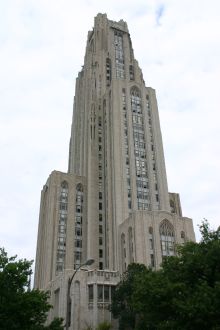
I love white birds! And I especially love big flocks of white birds, so I always try to visit Middle Creek in early March. It’s the biggest migration spectacle in Pennsylvania.
Every year in the first two weeks of March, snow geese and tundra swans stop at Middle Creek Wildlife Management Area near Kleinfeltersville, PA on their way to the Arctic. If the weather’s just right, up to 180,000 snow geese and 8,000 tundra swans will be at Middle Creek when you arrive. It’s HUGE!
There is no way a picture can adequately capture the beauty of this spectacle. The first thing that strikes you is the sound – a lake filled with white birds and the sound of a crowd. When the snow geese take off all at once, the roar sounds like a cheering crowd in a packed stadium. Their sight and sound and vibrant life fill the sky.
 Sometimes the snow geese settle on the lake again. Sometimes they fly away in loose Vs that become wavy lines in the distance. Either way it’s as if the sky is moving. The snow geese are a total sensory experience.
Sometimes the snow geese settle on the lake again. Sometimes they fly away in loose Vs that become wavy lines in the distance. Either way it’s as if the sky is moving. The snow geese are a total sensory experience.
The tundra swans are calming. In the morning they stay on the lake much longer than the snow geese, preening and calling to each other with melodious “whoo-ing” sounds. As each flock gets ready to leave, they swim in V formations, hum to each other and bob their heads. At take off they call loudly and run on the water to become airborne, then immediately form lines and Vs as they gain altitude. To me, everything the swans do is beautiful.
The best times to visit Middle Creek are the two hours at dawn and dusk. I always arrive before dawn and walk to Willow Point because I don’t want to miss seeing the geese leave.
The geese and swans aren’t the only attractions. This past Sunday I lingered in the parking lot to put on my gloves when a short-eared owl flew past my car – back and forth – and then pounced in the weeds and came up with breakfast. Wow!
After a couple of hours standing in the cold you too might want some breakfast. I hear the Kleinfeltersville Hotel and Tavern has good food. I like to stop at Mel’s Diner on Cumberland Street in Lebanon (Rt 422 West, nine miles away via Rt 897) because they have homemade raisin bread.
For directions to Middle Creek click here. Don’t miss the Visitors Center (open Feb 1 until Thanksgiving, Tuesday to Saturday 8am-4pm and Sunday noon-5pm) where you can see displays of the birds, get maps and information. On busy weekends you can buy food at the Visitors Center, courtesy of local Boy Scouts or churches.
Both photos are by Joe Kosack, PA Game Commission. The top photo is tundra swans taking off. The lower photo is a flock of snow geese.
 I’m a little late announcing that there are now two eggs at the Gulf Tower peregrine nest in downtown Pittsburgh. The second egg was laid late afternoon on March 13.
I’m a little late announcing that there are now two eggs at the Gulf Tower peregrine nest in downtown Pittsburgh. The second egg was laid late afternoon on March 13. Weather: We had an east wind today – not good in this land where the prevailing wind is from the southwest. Eventually the wind dropped and it began to rain steadily. I took a picture at 5:00pm near the Cathedral of Learning. Dreary, dreary sky. Not a good day for watching birds.
Weather: We had an east wind today – not good in this land where the prevailing wind is from the southwest. Eventually the wind dropped and it began to rain steadily. I took a picture at 5:00pm near the Cathedral of Learning. Dreary, dreary sky. Not a good day for watching birds. Thanks to Ed Shott who noticed that the Gulf Tower peregrine, Tasha, had laid her first egg this afternoon around 3:30pm. Ann Hohn of
Thanks to Ed Shott who noticed that the Gulf Tower peregrine, Tasha, had laid her first egg this afternoon around 3:30pm. Ann Hohn of 

























 Yesterday at work Cliff Curley called me around 4:00pm to say, “Come right now! Your hawk is on the ground by the loading dock eating a rabbit!”
Yesterday at work Cliff Curley called me around 4:00pm to say, “Come right now! Your hawk is on the ground by the loading dock eating a rabbit!”
 Dorothy usually lays her first egg between March 23 and March 29 so she’s probably “feeling egg-y.” She visits the nest box quite frequently now. Sometimes you can
Dorothy usually lays her first egg between March 23 and March 29 so she’s probably “feeling egg-y.” She visits the nest box quite frequently now. Sometimes you can 
 Sometimes the snow geese settle on the lake again. Sometimes they fly away in loose Vs that become wavy lines in the distance. Either way it’s as if the sky is moving. The snow geese are a total sensory experience.
Sometimes the snow geese settle on the lake again. Sometimes they fly away in loose Vs that become wavy lines in the distance. Either way it’s as if the sky is moving. The snow geese are a total sensory experience. No birding trip to Central Florida is complete without a visit to Merritt Island, home of NASA’s Kennedy Space Center and thousands upon thousands of birds.
No birding trip to Central Florida is complete without a visit to Merritt Island, home of NASA’s Kennedy Space Center and thousands upon thousands of birds.